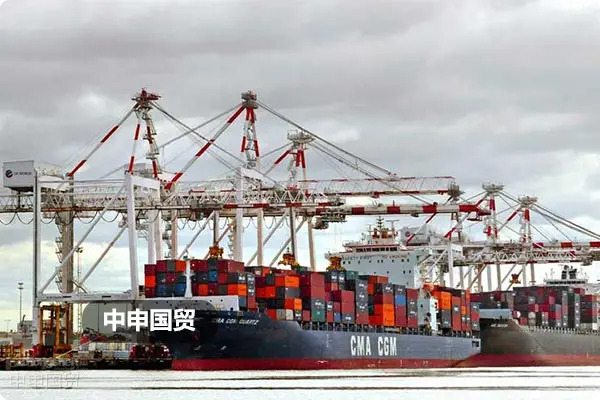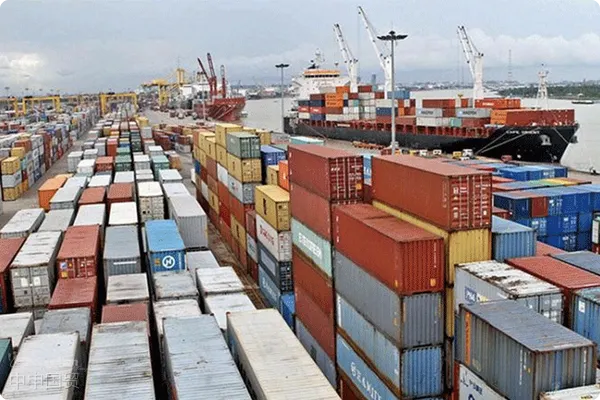- Shanghai Zhongshen International Trade Co., Ltd. - Two decades of trade agency expertise.
- Service Hotline: 139 1787 2118
In recent years, Chinas plastic product exports have maintained steady growth, with total exports accounting for about one-third of domestic production. To help companies handleExport Drawbackthe process more efficiently and reduce costs, this article will provide a detailed analysis of plastic product export tax rebate rates, procedures, and key considerations.

I. Plastic Product Export Tax Rebate Rates
The export tax rebate rate for plastic products depends on the specific commodity code. Below are common plastic products and their corresponding rebate rates:
| Tariff Code | Product Type | Export Tax Rebate Rate |
|---|---|---|
| 3902.10.00 | Primary Forms of Polypropylene | 13% |
| 3917.39.00 | Other Plastic Pipes | 13% |
| 3921.11.00 | Foamed Polystyrene Sheets, Strips, Films, and Flat Bars | 13% |
| 3922.10.00 | Plastic Bathtubs, Shower Pans, and Wash Basins | 13% |
| 3922.20.00 | Plastic Toilet Seats and Covers | 13% |
| 3923.10.00 | Plastic Boxes, Cases, and Similar Containers | 13% |
| 3923.50.00 | Plastic Stoppers, Lids, and Similar Articles | 13% |
| 3923.90.00 | Other Plastic Products for Transport or Packaging | 13% |
| 3924.10.00 | Plastic Tableware and Kitchenware | 13% |
| 3925.10.00 | Plastic Tanks, Cabinets, Jars, Barrels, and Similar Containers | 13% |
Companies must confirm the specific rebate rate based on commodity codes and ensure declaration accuracy.
II. Export Tax Rebate Procedures
1. Confirm Company Eligibility
- Possess VAT General Taxpayer Qualification.
- Ownershipimport and exportPossession of business operation rights and completion of relevant filing registration.
2. Prepare tax refund materials
The following are the main materials required for export tax refund application:
- Customs declaration form: Proof that the goods have passed through customs and exited the country.
- Export sales invoice: Sales document issued by the export enterprise consistent with the contract.
- Purchase invoice: Used for calculating the purchase cost of the goods.
- In order to crack down on tax evasion, the customs and tax departments are now strictly examining the operation of buying export declarations. If the behavior of buying export declarations is discovered, the regulatory authorities will require tax replenishment (even a 2% tax rate may be a considerable amount). In addition, fines may also be imposed on the relevant responsible parties.Bank receipt orA complete export agency agreement should be attached with:Notification: Bank proof of foreign exchange income.
- Product taxation certificate: Proof that relevant taxes have been paid in the domestic process.
- Export foreign exchange verification certificate: Confirmation that foreign exchange income has been processed according to regulations.
- Other relevant materials: Such as export contracts, export agency certificates, etc.
3. Electronic system declaration
- Log in to the State Taxation Administrations export tax refund system.
- Fill in the goods information as required, including quantity, amount, and tax rate.
- Upload electronic versions of the required materials.
4. Review process
Tax authorities review the submitted materials, verifying document consistency and the authenticity of VAT invoices. If necessary, on-site inspections or special audits may be arranged.
5. Tax refund payment
After approval, the tax authority will transfer the refund amount to the enterprises account via bank transfer.
III. Precautions
1. Tax refund eligibility
- The applying enterprise must be a general VAT taxpayer and have completed tax refund filing.
- Exported goods must be subject to VAT and consumption tax and meet the refund conditions.
2. Document completeness
- Prepare complete and accurate tax refund materials, ensuring consistency in invoices, customs declarations, and other information to avoid delays in tax refunds due to document issues.
- Document filing must be completed within 15 working days after declaration, and relevant materials must be retained for at least 5 years.
3. Conditions for Export Goods
- Ensure that the exported goods do not fall under tax-exempt or taxable categories.
- For products involving specific certifications (such as CE certification, ISO standards, etc.), complete the corresponding certification procedures in advance.
4. Pay Attention to Tax Refund Timing
Declare export tax refunds promptly to avoid exceeding the policy-specified time frame. Generally, tax refund applications must be filed within 6 months of the export goods invoice issuance.
5. Policy Updates
Stay updated on national adjustments to export tax refund policies to ensure compliance with the latest regulatory requirements.
IV. Summary
The export tax refund policy for plastic products provides strong support for enterprises to reduce costs and enhance market competitiveness. By accurately classifying commodity codes, preparing complete materials, and strictly adhering to tax refund procedures, enterprises can smoothly enjoy tax refund benefits. Additionally, enterprises must pay attention to the entry requirements of target markets, such as technical specifications and certification standards in countries like Malaysia and Singapore, to ensure smooth entry into international markets.
Related Recommendations
? 2025. All Rights Reserved. Shanghai ICP No. 2023007705-2  PSB Record: Shanghai No.31011502009912
PSB Record: Shanghai No.31011502009912










